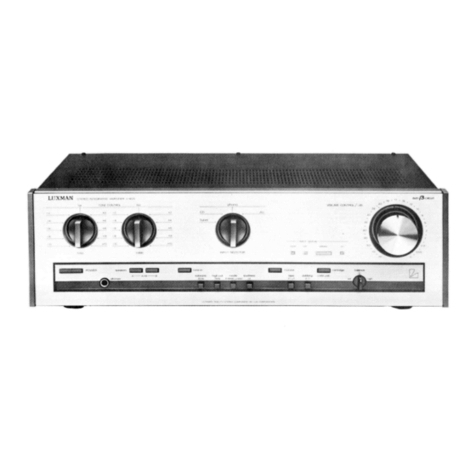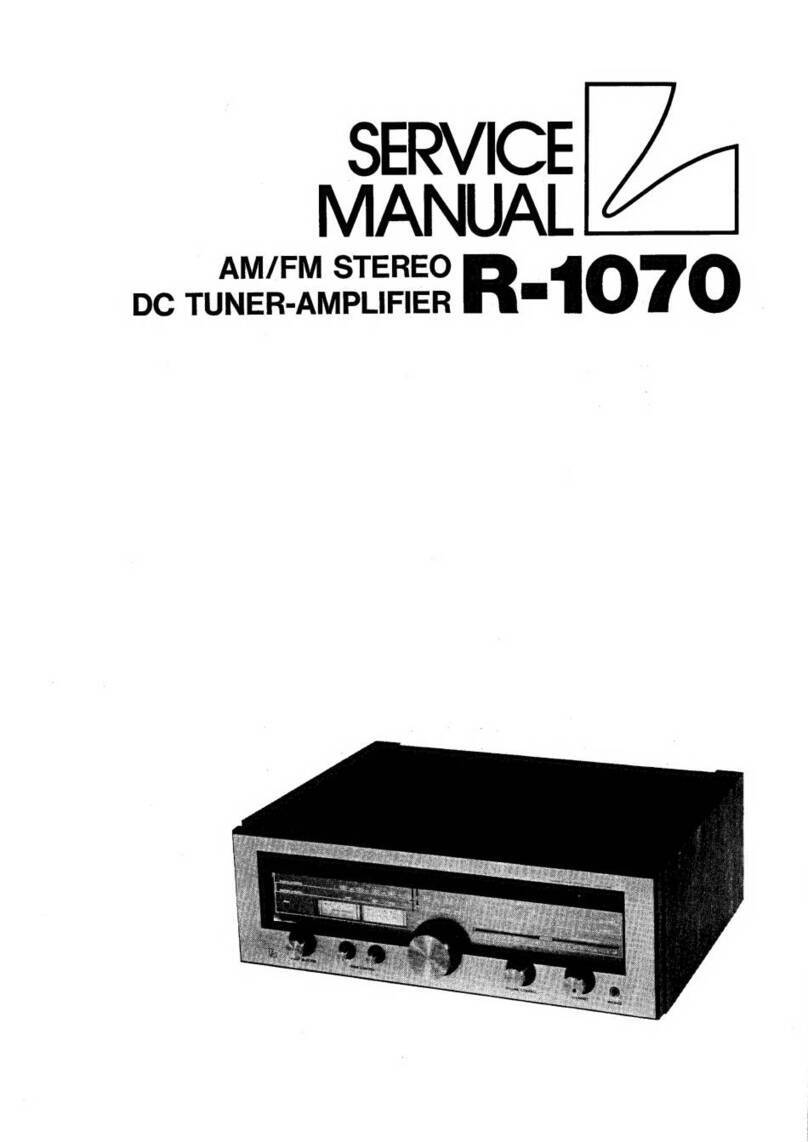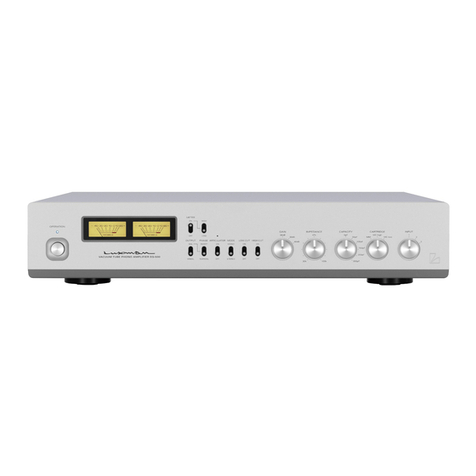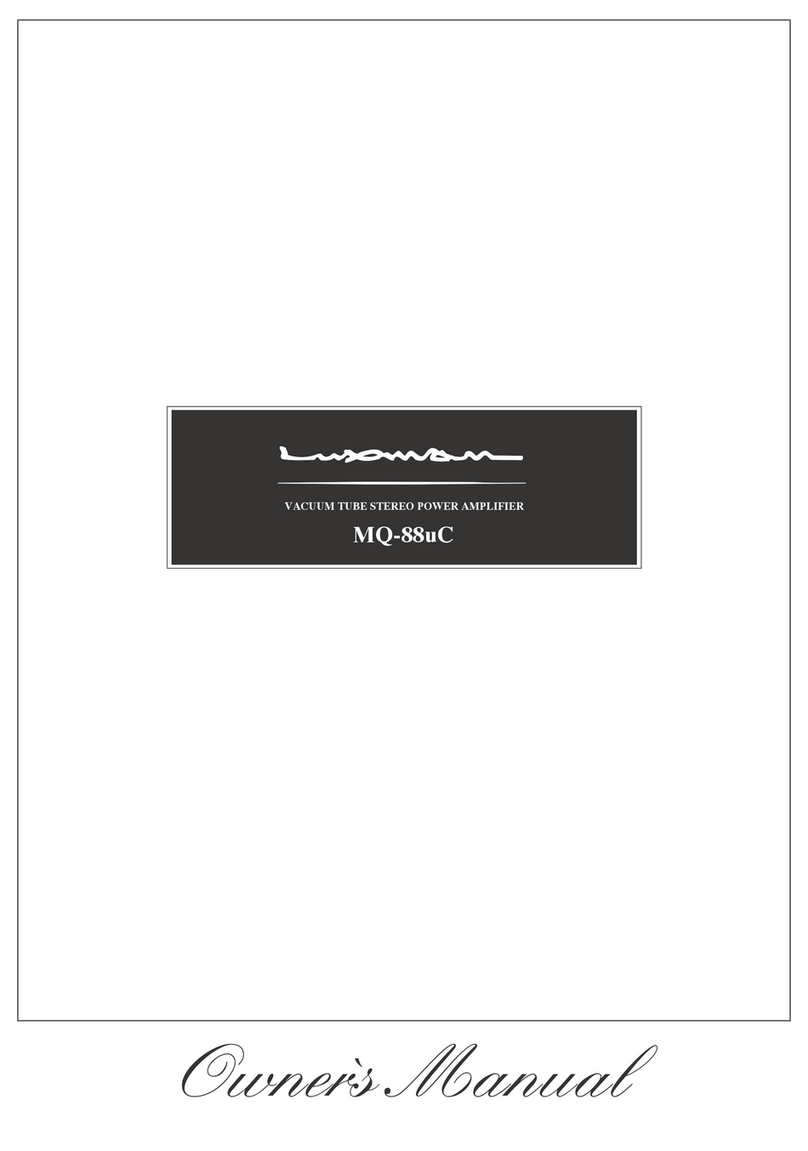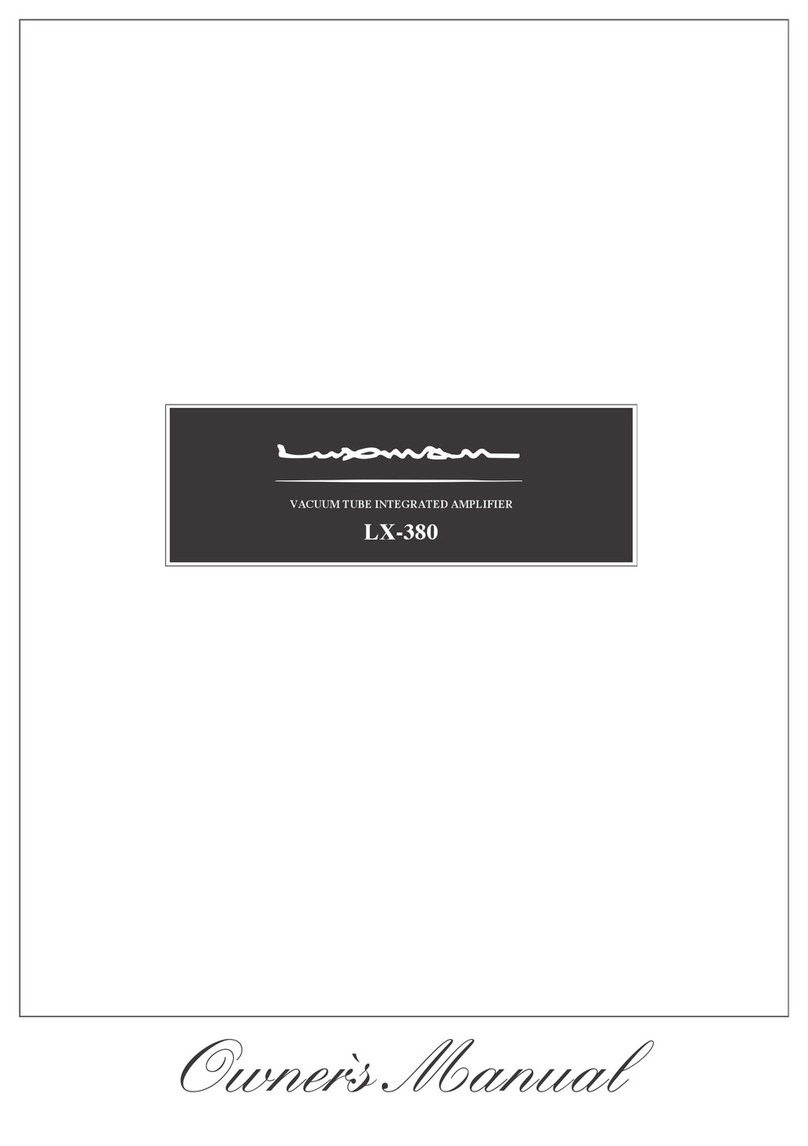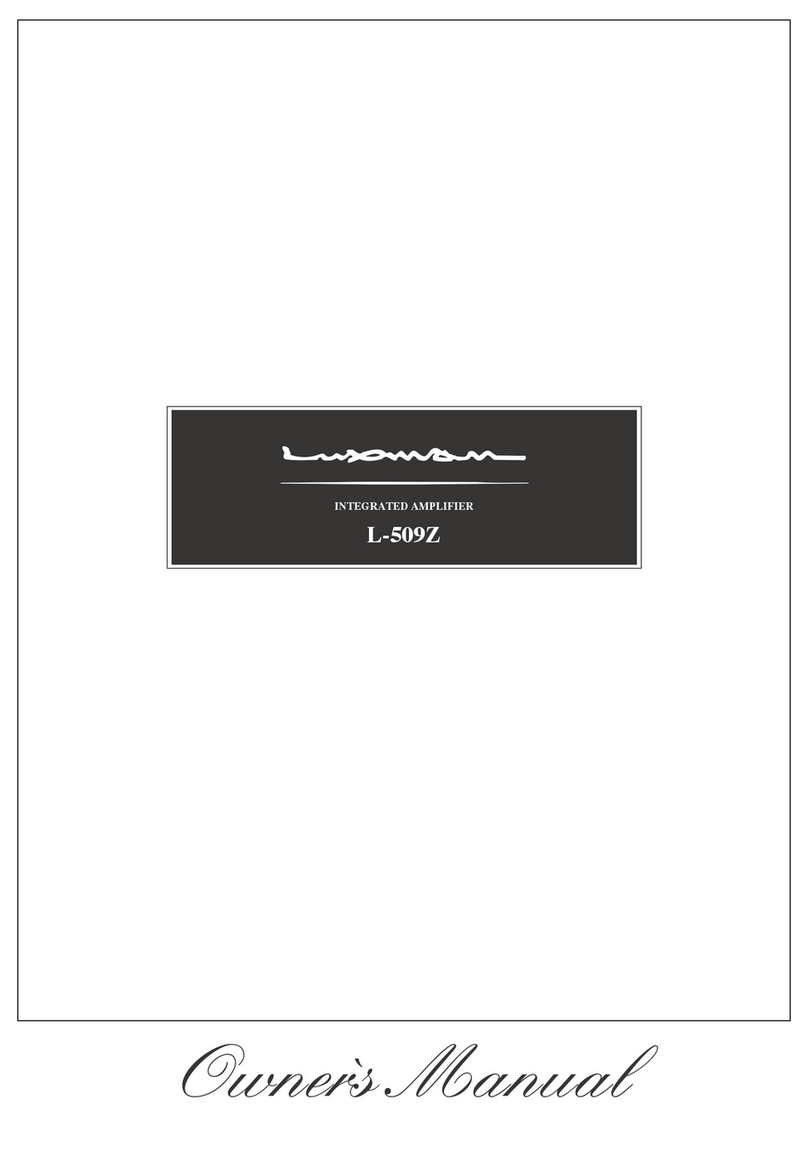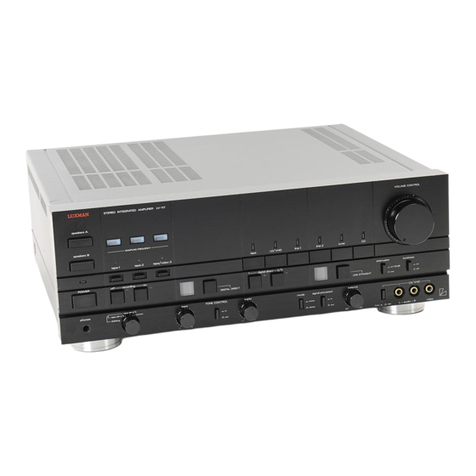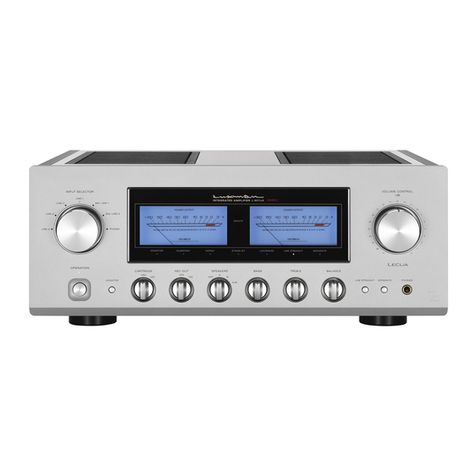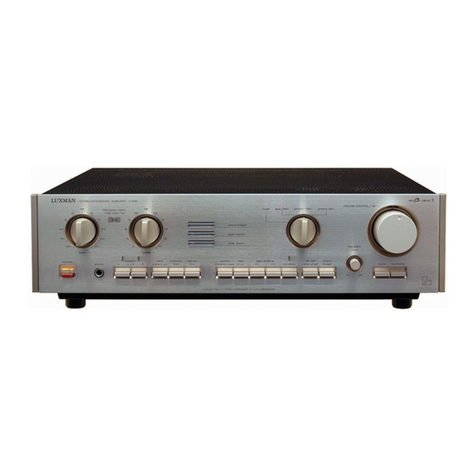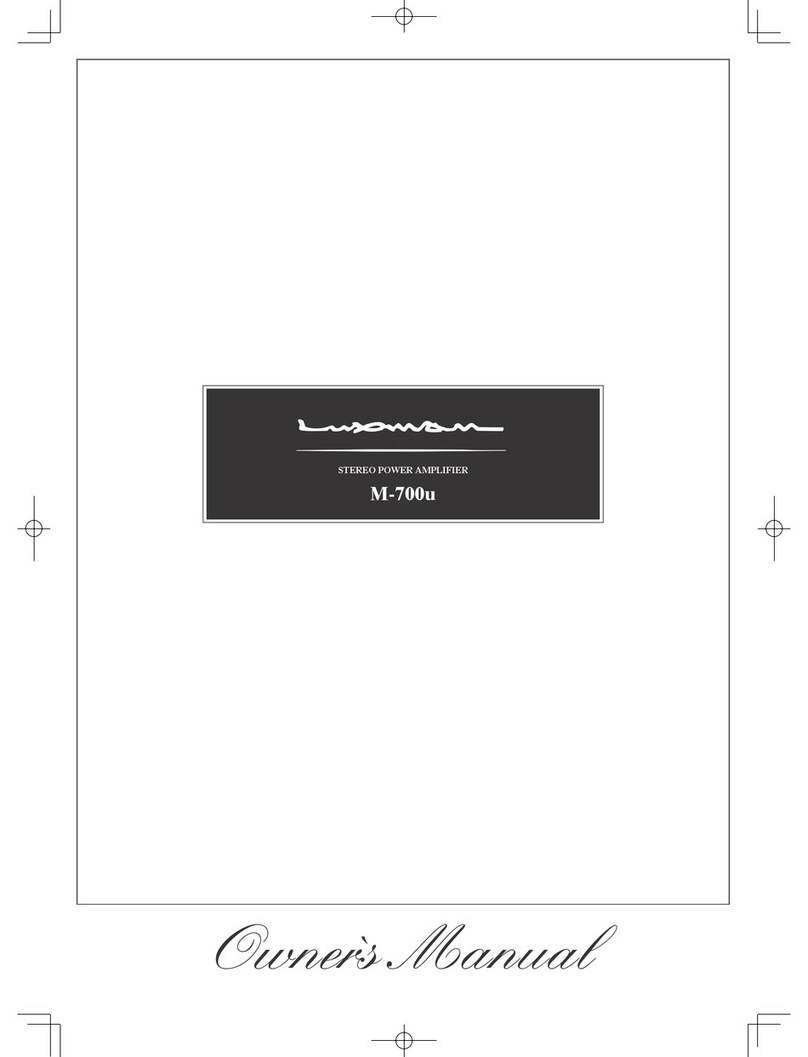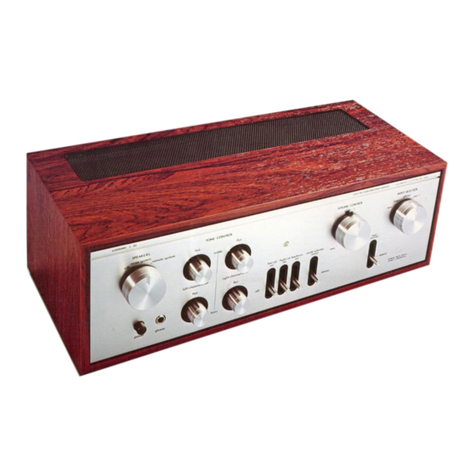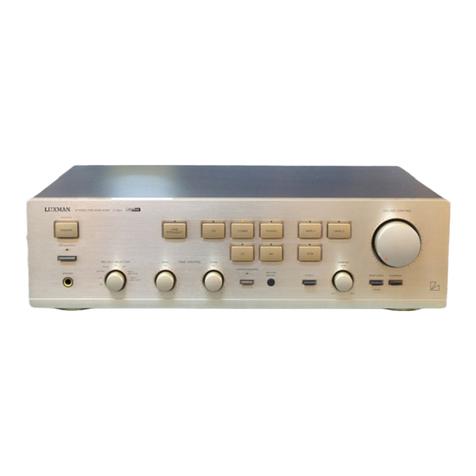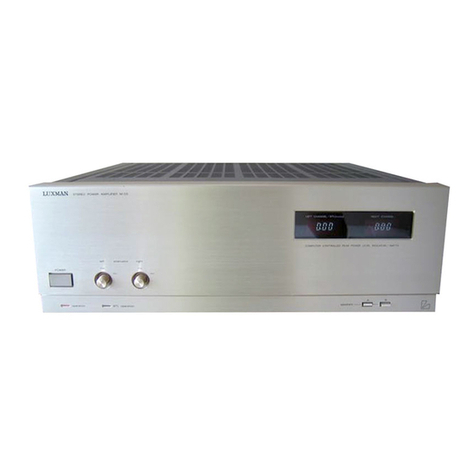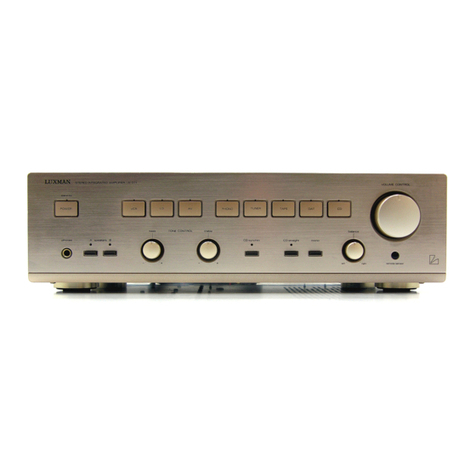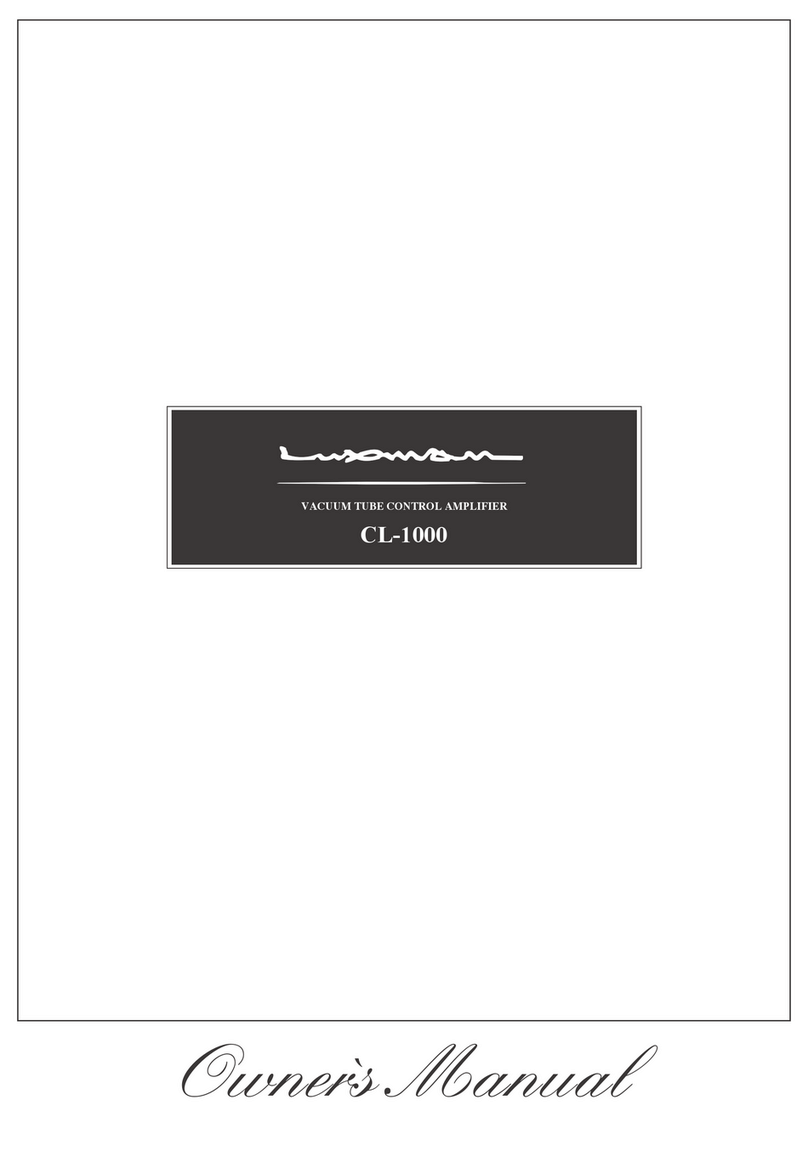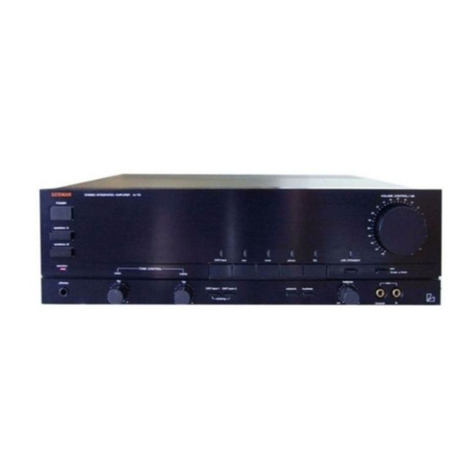5
6. External pre switch (EXT PRE)
Input selector switch to select the external pre-input termi-
nal (EXT PRE) on the rear panel
ON: Allows the output signals coming from the pre-ampli-
fier or AV amplifier connected to the external pre-in-
put terminal to be provided directly from the unbal-
anced terminal.
OFF: Enables to reproduce the signals from the source se-
lected with the input selector.
Holding down the switch for approx. 1 second toggles the
external pre switch ON and OFF.
When the external pre switch is set to ON, the external pre
indicator lights up.
When the main power switch is turned off or this unit is
in the standby state, external pre-input signals are always
provided from the unbalanced output terminal regardless of
this switch setting.
The input signals connected to the external pre-input ter-
minal are not provided from the balanced output terminal.
When the external pre switch is set to ON, the volume con-
trol of this unit cannot adjust the sound volume.
Volume adjustment shall be performed at the input device
side such as the pre-amplifier connected to the external
pre-input terminal.
If a device that has no volume adjustment function such as
a CD player is connected to the external pre-input terminal,
the volume control of this unit cannot function, and there-
fore, sudden loud sound may be generated when the exter-
nal pre-input is selected, which may cause hearing loss or
damage to the speakers.
For such input devices, be sure to use a pre-amplifier
equipped with the sound volume adjustment function as
a relay, generate sound through the speakers with volume
lowered, and adjust the volume to your favorite level.
7. Output mode selection switch
(OUTPUT MODE)
Selects an output mode from the following 3 kinds: unbal-
anced output, balanced output, and bi-amplifier output
Every time this switch is pressed, the output changes as
follows: UNBAL→BAL→BI-AMP→UNBAL ...
• Unbalanced output (UNBAL)
Sound comes out from LINE-1 and LINE-2.
• Balanced output (BAL)
Sound comes out from BAL LINE-1 and BAL LINE-2.
• Bi-amplifier output (BI-AMP)
Sound comes out from LINE-1 and LINE-2.
LINE-1 (Lch): LOW (Lch)
LINE-1 (Rch): LOW (Rch)
LINE-2 (Lch): HIGH (Lch)
LINE-2 (Rch): HIGH (Rch)
When the input selector is set to balanced, the bi-amplifier
output cannot be selected.
Change the output mode after setting the input selector to
unbalanced.
Factory default: Unbalanced output (UNBAL) mode
The input/output muting circuit is activated to mute sound
during selecting an output mode.
Every output mode can store preset values, respectively.
Refer to the descriptions about presetting on pages 22 to
25 for presetting.
8. Balance control (BALANCE)
Adjusts the balance of sound volume between right and left
channels.
Rotating this control counterclockwise causes the left sound
volume to be enhanced, and rotating this control clockwise
causes the right sound volume to be enhanced.
This control shall be set to the center position under normal
conditions, and rotated to make adjustment if necessary.
The adjustable value for right/left balance is up to -6 dB for
right and left each.
9. Remote sensor (REMOTE)
Receives signals from the accessory remote control.
